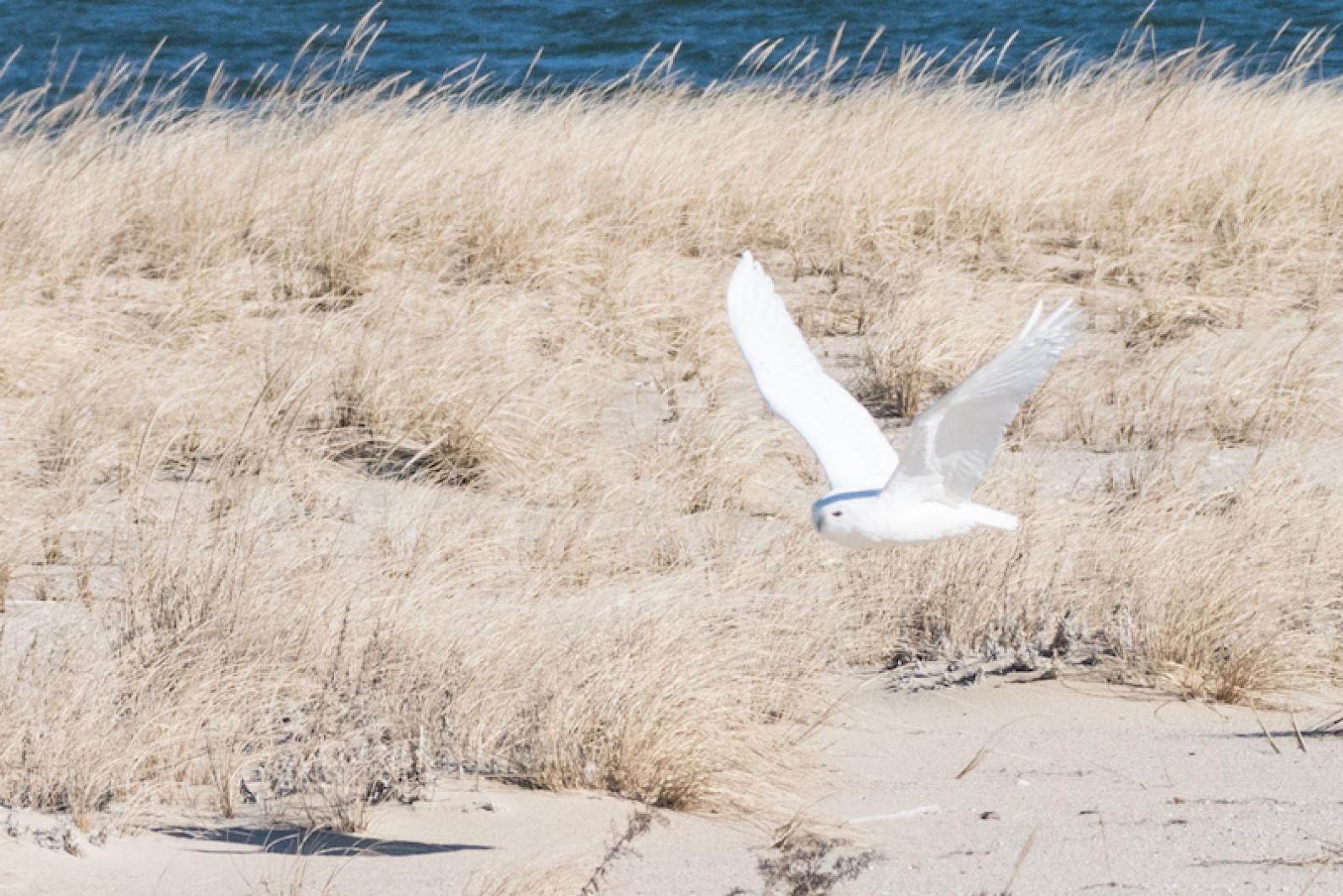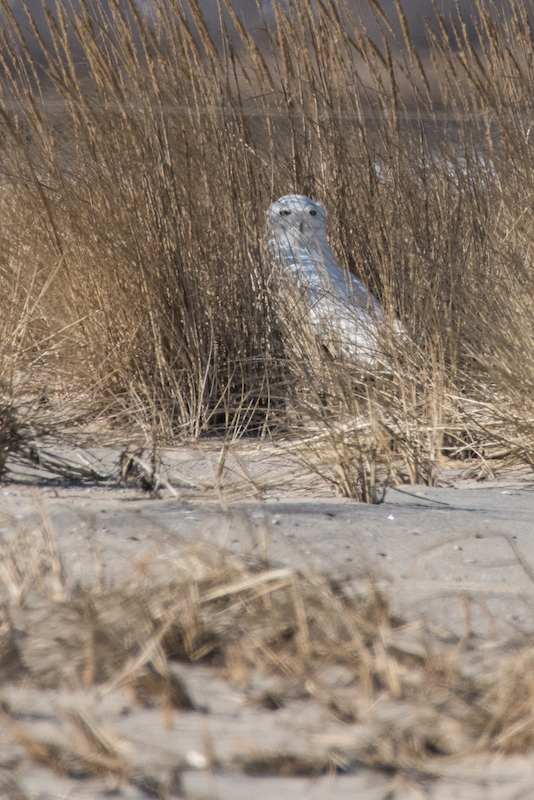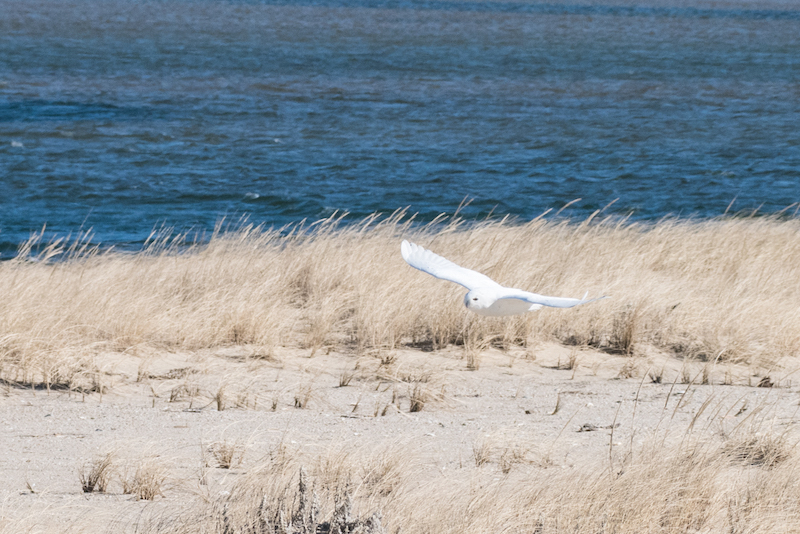It was a hardy and eager bunch who showed up Saturday morning armed with scarves, mittens, boots and binoculars ready to prowl for snowy owls. The leaders of the guided tour provided by The Trustees of the Reservations promised to do their best to find two snowy owls who had flown from their Arctic summer homes to take up winter residence on Norton Point Beach.
Public program manager Rebecca Uva greeted the guests as they arrived, and interpretive guide Mary Spencer brought good news. To get to the tour she had driven over the sand from Chappaquiddick, and on the way she spotted a juvenile snowy owl, news that was greeted with great anticipation.
Half the group piled into a warm van with limited viewing, the other half piled onto benches in the open bed of a pick-up truck which was much colder, but provided an unobstructed 360-degree view of the beachscape. With tires appropriately deflated, we ventured off across the sand toward Wasque Point.
A ways down the beach, the lead van stopped and everybody stepped out into the biting winds. Based on the intelligence gathered earlier by Ms. Spencer, the guests were led to the back of the dunes and quickly spotted the juvenile, identified by a few brown tipped feathers mixed with snow white feathers. It was hunkered down between a dune and the shoreline of Katama Bay.
A flurry of binoculars, spotting scopes and long camera lenses followed. We edged a bit closer, carefully watching the bird, but not too close.
“We don’t want to fluster them, we want to observe them in their natural behavior,” Ms. Uva said later. “It’s tempting to get up close. Winter is a tough time, and we don’t want to stress any of the birds out. It uses up some of their winter reserves. We don’t want to interfere in any way.”
Snowy owls spend a lot of time on the ground, either hunting for prey or digesting prey they ate earlier. They have incredible eyesight, but even more incredible hearing, capable of detecting a mouse or a vole burrowing under snow 60 feet away, according to Ms. Uva. They hunt mostly using their hearing, not their sight, and can fly in absolute silence.
“They’ll be down on the prey even before the prey realizes anything is coming,” Ms. Uva said.
After hiking back around the dunes, everyone piled into the vehicles again, and the small caravan moved on.
Snowy owls are very territorial, so it was with some surprise that the lead van stopped suddenly after traveling a short distance toward Wasque. Just ahead, a large adult male perched among the scrub brush and beach grasses. He was pure white and quite regal as he turned his head to size up the visitors. To the delight of the guests, he lifted off and flew low and silent over the short dunes, giving us all a rare look at the five-foot wingspan of a snowy owl in flight.
After a drive along the beach around Wasque, over the Dike Bridge, and back to the Mytoi Gardens ranger station, the group stopped for a break. Much hot chocolate and hot cider was consumed, and the warm sun fortified the guests for the trip back.
On the way back we spotted both owls briefly again. The adult male had moved his perch, but the juvenile was in the same spot. Back at the Norton Point entrance, the tour was declared a complete success, despite the chilly conditions.
“We managed to see the Snowy, get some time to see the juvenile, and nobody got hypothermia,” Ms. Uva said later.
The next snowy owl prowl scheduled by the Trustees is on Feb. 25.









Comments
Comment policy »